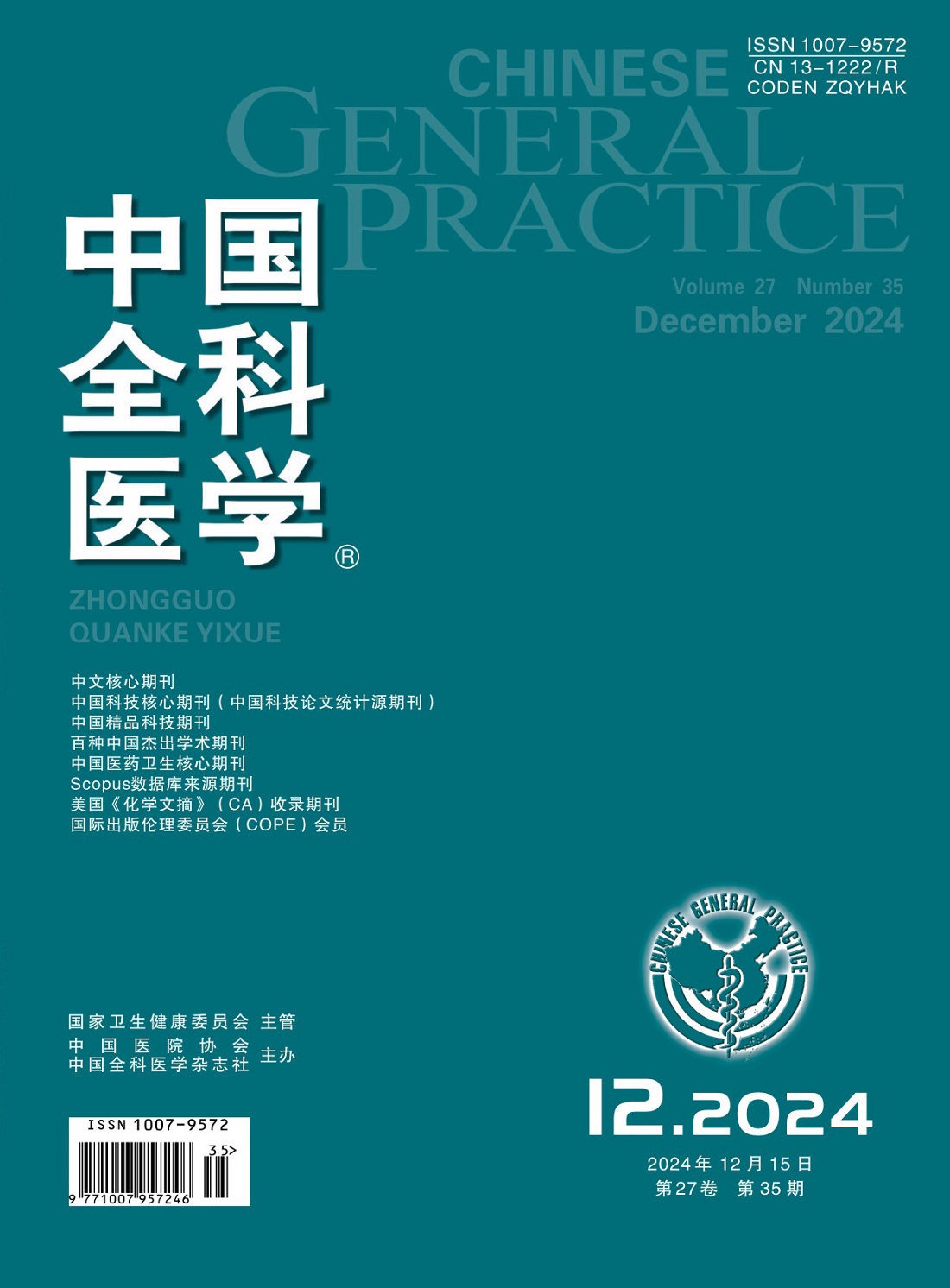Risk Factors and Predictive Scoring System Development for COVID-19 Death
Ling Chen, J. Chen, Yuwei Liu, Xuebei Du, Li Peng, Ya-lei Jin, Haoxiang Wang, Yan Zhao
求助PDF
{"title":"Risk Factors and Predictive Scoring System Development for COVID-19 Death","authors":"Ling Chen, J. Chen, Yuwei Liu, Xuebei Du, Li Peng, Ya-lei Jin, Haoxiang Wang, Yan Zhao","doi":"10.12114/J.ISSN.1007-9572.2020.00.555","DOIUrl":null,"url":null,"abstract":"Background: The COVID-19 has become a global epidemic How to effectively treat it and reduce the fatality rate is still at exploratory stage Identification of risk factors for death is critical to optimize treatment strategies for COVID-19 Objective: To investigate risk factors for COVID-19 death, and based on this, to develop a COVID-19 death predictive scoring system Methods: Two hundred and seventy patients, who discharged or deceased with confirmed COVID-19 in Zhongnan Hospital of Wuhan University during January 1 to February 29, 2020, were reviewed Baseline data were obtained, including demographics, admission symptoms and vital signs, complications and laboratory test results According to the clinical outcome, i e discharged and deceased, the patients were divided into recovery group and death group Risk factors of death were explored by using multivariate logistic regression analysis, and used for the development of a predictive scoring system for death Results Two hundred and forty-five cases were finally included, including 212 discharged and 33 deceased during hospitalization Factors independently associated with death were age ≥ 65 years〔OR=7 177, 95%CI(1 715, 30 038), P<0 05〕, SpO2≤93%〔OR=15 456, 95%CI(3 343, 71 450), P<0 05〕, BUN≥7 mmol/L〔OR=7 115, 95%CI(1 550, 32 652), P<0 05〕, PCT≥0 1 μg/L〔OR=23 895, 95%CI(4 209, 135 639), P<0 05〕 In predicting death due to COVID-19, the AUC of ASBP(A: age, S: SpO2, B: BUN, P: PCT) scoring system was 0 967〔95%CI(0 931, 0 987)〕, and that of CURB-65 scoring system was 0 885〔95%CI(0 831, 0 926)〕, showing a significant difference(Z=2 816, P<0 01) 5 was the maximal Youden Index for ASBP scoring system and was chosen as the cut-off value, with 0 871 sensitivity and 0 957 specificity And 2 was the maximal Youden Index for CURB-65 scoring system and was chosen as the cut-off value, with 0 903 sensitivity and 0 735 specificity Conclusion: Older age, lower SpO2, higher levels of BUN and PCT were independent risk factors for COVID-19 death, and the ASBP scoring system developed based these factors might be available for the assessment of death risk of COVID-19 Copyright © 2020 by the Chinese General Practice","PeriodicalId":10013,"journal":{"name":"中国全科医学","volume":"23 1","pages":"4419-4424"},"PeriodicalIF":0.0000,"publicationDate":"2020-12-15","publicationTypes":"Journal Article","fieldsOfStudy":null,"isOpenAccess":false,"openAccessPdf":"","citationCount":"0","resultStr":null,"platform":"Semanticscholar","paperid":null,"PeriodicalName":"中国全科医学","FirstCategoryId":"3","ListUrlMain":"https://doi.org/10.12114/J.ISSN.1007-9572.2020.00.555","RegionNum":0,"RegionCategory":null,"ArticlePicture":[],"TitleCN":null,"AbstractTextCN":null,"PMCID":null,"EPubDate":"","PubModel":"","JCR":"Q3","JCRName":"Medicine","Score":null,"Total":0}
引用次数: 0
引用
批量引用
Abstract
Background: The COVID-19 has become a global epidemic How to effectively treat it and reduce the fatality rate is still at exploratory stage Identification of risk factors for death is critical to optimize treatment strategies for COVID-19 Objective: To investigate risk factors for COVID-19 death, and based on this, to develop a COVID-19 death predictive scoring system Methods: Two hundred and seventy patients, who discharged or deceased with confirmed COVID-19 in Zhongnan Hospital of Wuhan University during January 1 to February 29, 2020, were reviewed Baseline data were obtained, including demographics, admission symptoms and vital signs, complications and laboratory test results According to the clinical outcome, i e discharged and deceased, the patients were divided into recovery group and death group Risk factors of death were explored by using multivariate logistic regression analysis, and used for the development of a predictive scoring system for death Results Two hundred and forty-five cases were finally included, including 212 discharged and 33 deceased during hospitalization Factors independently associated with death were age ≥ 65 years〔OR=7 177, 95%CI(1 715, 30 038), P<0 05〕, SpO2≤93%〔OR=15 456, 95%CI(3 343, 71 450), P<0 05〕, BUN≥7 mmol/L〔OR=7 115, 95%CI(1 550, 32 652), P<0 05〕, PCT≥0 1 μg/L〔OR=23 895, 95%CI(4 209, 135 639), P<0 05〕 In predicting death due to COVID-19, the AUC of ASBP(A: age, S: SpO2, B: BUN, P: PCT) scoring system was 0 967〔95%CI(0 931, 0 987)〕, and that of CURB-65 scoring system was 0 885〔95%CI(0 831, 0 926)〕, showing a significant difference(Z=2 816, P<0 01) 5 was the maximal Youden Index for ASBP scoring system and was chosen as the cut-off value, with 0 871 sensitivity and 0 957 specificity And 2 was the maximal Youden Index for CURB-65 scoring system and was chosen as the cut-off value, with 0 903 sensitivity and 0 735 specificity Conclusion: Older age, lower SpO2, higher levels of BUN and PCT were independent risk factors for COVID-19 death, and the ASBP scoring system developed based these factors might be available for the assessment of death risk of COVID-19 Copyright © 2020 by the Chinese General Practice
COVID-19死亡的危险因素和预测评分系统开发
背景:新冠肺炎已成为全球流行病如何有效治疗并降低病死率仍处于探索阶段识别死亡风险因素对于优化新冠肺炎治疗策略至关重要目的:调查新冠肺炎死亡的风险因素,并在此基础上,建立新冠肺炎死亡预测评分系统方法:回顾武汉大学中南医院2020年1月1日至2月29日因确诊新冠肺炎出院或死亡的270例患者的基线数据,包括人口统计学、入院症状和生命体征,并发症和实验室检查结果根据临床转归,即出院和死亡,将患者分为康复组和死亡组。采用多元逻辑回归分析探讨死亡的危险因素,并用于开发死亡预测评分系统。结果最终纳入245例,其中出院212例,住院期间死亡33例与死亡独立相关的因素为年龄≥65岁〔OR=7 177,95%CI(1 715,30 038),P<005〕,SpO2≤93%〔OR=15 456,95%CI(3 343,71 450),P>001〕,BUN≥7 mmol/L〔OR=7 115,95%Cl(1 550,32 652,ASBP(A:年龄,S:SpO2,B:BUN,P:PCT)评分系统的AUC为0 967〔95%CI(0 931,0 987)〕,CURB-65评分系统的AUC为0 885〔95%CI(0 831,0 926)〕,以0 871敏感性和0 957特异性,2是CURB-65评分系统的最大尤登指数,并被选为临界值,敏感性为0 903,特异性为0 735。结论:年龄较大、SpO2较低、BUN和PCT水平较高是新冠肺炎死亡的独立危险因素,基于这些因素开发的ASBP评分系统可能可用于评估新冠肺炎的死亡风险版权所有©2020中国全科医学
本文章由计算机程序翻译,如有差异,请以英文原文为准。


